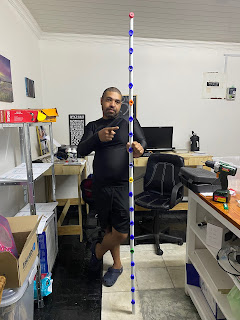Design Thinking in Seabird Rehabilitation: From Comfort Mats to Adaptive Solutions
Embarking on a seabird rehabilitation learnership at SANCCOB has been a transformative journey, immersing me in the vital work of seabird hand rearing, husbandry, and rehabilitation.
This novelty was designed to offer the essential support required for these birds to rest their heads or injured limbs, ensuring they receive the specialised care vital for their recovery journey.
The use of pool noodles as a design medium seemed viable due to their softness, lightweight nature, durability, and affordability. The soft and flexible material of pool noodles ensures a gentle touch for the sensitive skin of injured seabirds, helping to alleviate any discomfort they may experience. Their lightweight design makes it easy to transport the mat and position it in different areas of the rehabilitation centre, which is especially important for weakened or injured birds.
Additionally, pool noodles are durable and can withstand the wear and tear from regular use by injured seabirds.
This resilience ensures that the mat remains effective over time. Added bonus, pool noodles are a cost-effective option, making them accessible for wildlife rehabilitators with budget constraints.
By choosing pool noodles as the primary material for the padded mat, the aim was to create a supportive and comfortable space that contributes to the recovery and well-being of injured seabirds. A practical approach was decided by crafting a square frame using PVC conduit, providing a sturdy foundation for the mat. This frame served as the structural support onto which one could seamlessly slot the pool noodles.
The colour turquoise is similarly associated with peace and tranquillity, which may be why seabirds find it calming. Lavender is another colour that is often associated with peace and relaxation.
During the testing phase, we had an unexpected discovery. We found that the padded mat designed for injured seabirds could be repurposed as a floating raft for a white-breasted cormorant in rehabilitation. This particular cormorant had severe damage to its hocks and feet, and standing on them all day was exacerbating the issue.
Remarkably, this adaptation demonstrates the versatility of the design, as it not only supports seabirds but similarly aids in the rehabilitation of other aquatic birds with different needs. This unexpected utility underscores the potential for further innovative applications in wildlife rehabilitation and care.
With confidence, the padded mat for injured seabirds is a valuable tool that can help improve the care and recovery of these animals. One feels gratitude for the opportunity to use skills and creativity to make a difference in the lives of seabirds








Comments
Post a Comment